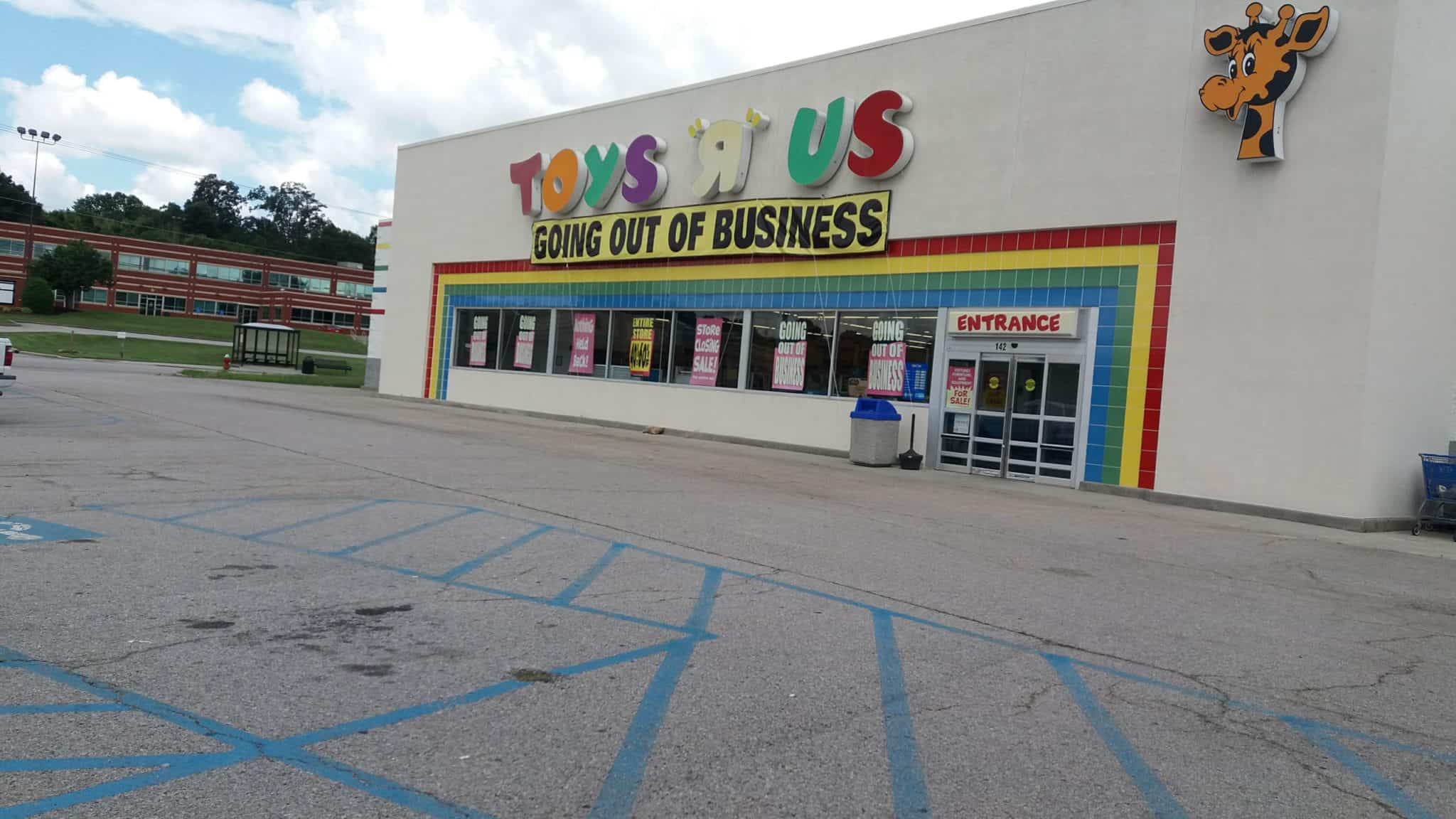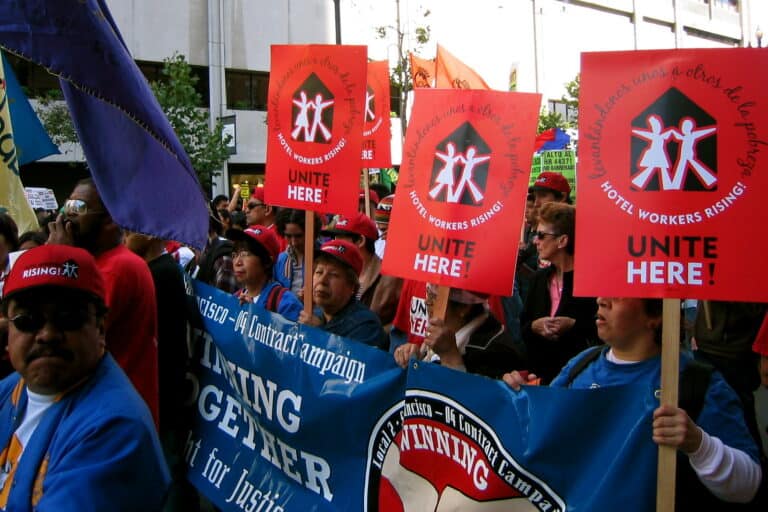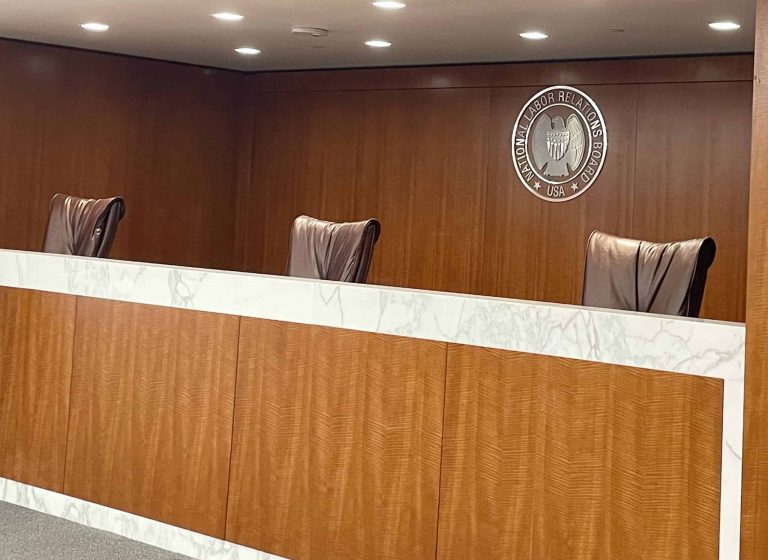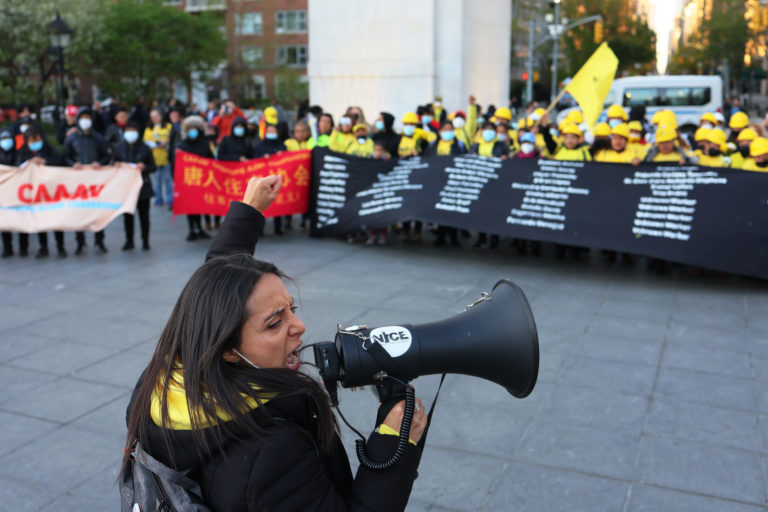On September 18, 2017, Toys R Us filed for bankruptcy. The toy retailer had been in decline since at least 2000, but ran into real trouble after a consortium of private equity and real estate firms bought the ailing private company in 2005 in a $6.6 billion leveraged buy-out. The group intended to restructure the retailer and take it public, but in the meantime extracted hundreds of millions of dollars in management fees, interest, and rent. Ultimately, the company’s $5 billion debt burden left it unable to adapt to competition from Amazon and other retailers or to weather the recession. While the company’s initial bankruptcy filing provided for a renegotiation of its debt and proposed a restructuring plan to keep it afloat, a weak holiday season eventually convinced lenders to pull the plug. By March 2018, Toys R Us had begun liquidating its 735 stores.
As a result, 33,000 Toys R Us employees would lose their jobs, adding to the thousands who had already been laid off since September’s filing. Toys R Us had been a good place to work by retail standards prior to the buyout; many employees had full-time work with benefits, including a generous severance plan. But after the company tipped into liquidation, employees were told that they would not receive the severance packages they had been promised, in part because there would not be enough money left after paying the company’s creditors, bankruptcy attorneys, and consultants, who took home $348 million in fees. Meanwhile, the bankruptcy court approved $8.2 million in bonuses for five of the company’s executives to stick around during the wind-down.
Enter Rise Up Retail, a “movement of retail workers fighting for better pay, fair hours, paid family leave, and respect in the retail industry” that was jointly established by United for Respect and the Center for Popular Democracy. Over the past year, Rise Up Retail has worked with former Toys R Us employees to conduct a campaign directed at the company’s owners and lenders in an effort win severance from them. While Toys R Us sold off stock and closed down stores, its employees circulated petitions demanding severance, protested on Wall Street, and wore signs on their uniforms shaming the company’s owners. Workers also engaged in “shareholder activism,” successfully pressuring at least one public pension fund to divest from Toys R Us’s owners until they agreed to pay severance. Crucially, the workers themselves played a central role in organizing each of these actions and appealing to stakeholders; the pension board meetings at which Rise Up Retail called for divestment were attended not by lobbyists or union representatives, but by workers from the very states and municipalities that those funds purported to serve. The workers’ visibility in the campaign, combined with the perceived culpability of Wall Street and fondness for the Toys R Us brand, generated a tide of public sympathy that put additional pressure on the company’s owners.
The campaign was successful. By August 2018, two of the private equity firms that own Toys R Us agreed to contribute $20 million to a severance fund. While that number falls short of the $75 million that employees claim they are owed, it is nonetheless a moment of historic importance: never before had such a fund been established. Toys R Us employees have since turned their attention to the hedge funds that ultimately made the decision to liquidate the company and are now its top creditors in an effort to recoup some of the remaining $55 million.
The Bankruptcy Process Doesn’t Work for Workers
Toys R Us is a harbinger of things to come. In 2017 alone, some 7,000 stores closed, leaving 50,000 workers jobless. Nine of the ten largest retail bankruptcies during that year were of stores that had been bought out by private equity funds. According to Bloomberg, the “retail apocalypse” has only just begun. As online marketplaces expand and storefront retailers struggle to repay the debts they have taken on in leveraged buyouts, an increasing number of companies will declare bankruptcy. Thus, many of the U.S. retail sector’s 16 million workers are in trouble.
The problem is that the bankruptcy process provides little relief for laid-off employees. A failing company can file for bankruptcy through one of two means. Chapter 11 grants a company temporary reprieve from paying its bills while it devises a restructuring plan and renegotiates its debts. The restructuring plan almost always involves shuttering low-performing stores and laying off employees. In a Chapter 7 bankruptcy, as eventually occurred with Toys R Us, the company liquidates its assets to pay back its creditors.
Either way, employees get a raw deal. The U.S. Bankruptcy Code establishes a “pecking order” governing the priority in which parties’ claims get paid out. At the top sit the bankers and lawyers who manage the bankruptcy or help the company muddle through liquidation. Next come the secured creditors and bondholders who have loaned the company money. Employees sit somewhere near the bottom and are entitled to no more than $10,000 for claims earned within 180 days before the bankruptcy. Severance pay is among the claims that employees can bring, but they must do so individually. At any rate, by the time a bankrupt company pays back its lenders—especially when its debts far outweigh its assets as a result of a leveraged buyout—there’s often nothing left for them.
Potential Statutory Solutions
Toys R Us’s bankruptcy has spurred legislative efforts to address this problem. At the federal level, Congressman Tim Ryan has introduced the Prioritizing Our Workers Act, which would revise the bankruptcy code’s priorities section and elevate workers’ claims to “unfunded vested benefits in a defined benefits pension plan” to the highest level. Ryan’s bill would essentially codify an argument that Toys R Us workers originally made in bankruptcy court: that their claims should take top priority alongside those of the lawyers and bankers helping the company navigate liquidation because their services were necessary for winding down the company.
At the state-level, New Jersey is currently debating the country’s first universal severance bill. Under Bill S-3170, employers would have to pay laid-off workers one week of severance for each year of service. That bill would also strengthen federal WARN Act protections by increasing the minimum notice that employers must give to employees in the event of a mass lay-off from 60 to 90 days. Finally, the bill includes several provisions aimed at averting future Toys R Us-style disasters. Those include a requirement that employers provide 15-days’ notice in advance of a bankruptcy filing, a ban on firing employees for 180 days prior to such a filing, and classifying the Wall Street firms and executives that own and control retailers as joint employers.
However, until those laws see the light of day, workers’ only hope of winning severance pay still lies outside of the bankruptcy process. Rise Up Retail has now turned its attention to Sears, which declared bankruptcy in October 2018 after its owner saddled it with billions of dollars in debt loaned from his own personal hedge fund. Time will tell whether the success of the Toys R Us campaign can be replicated.







Daily News & Commentary
Start your day with our roundup of the latest labor developments. See all
December 22
Worker-friendly legislation enacted in New York; UW Professor wins free speech case; Trucking company ordered to pay $23 million to Teamsters.
December 21
Argentine unions march against labor law reform; WNBA players vote to authorize a strike; and the NLRB prepares to clear its backlog.
December 19
Labor law professors file an amici curiae and the NLRB regains quorum.
December 18
New Jersey adopts disparate impact rules; Teamsters oppose railroad merger; court pauses more shutdown layoffs.
December 17
The TSA suspends a labor union representing 47,000 officers for a second time; the Trump administration seeks to recruit over 1,000 artificial intelligence experts to the federal workforce; and the New York Times reports on the tumultuous changes that U.S. labor relations has seen over the past year.
December 16
Second Circuit affirms dismissal of former collegiate athletes’ antitrust suit; UPS will invest $120 million in truck-unloading robots; Sharon Block argues there are reasons for optimism about labor’s future.